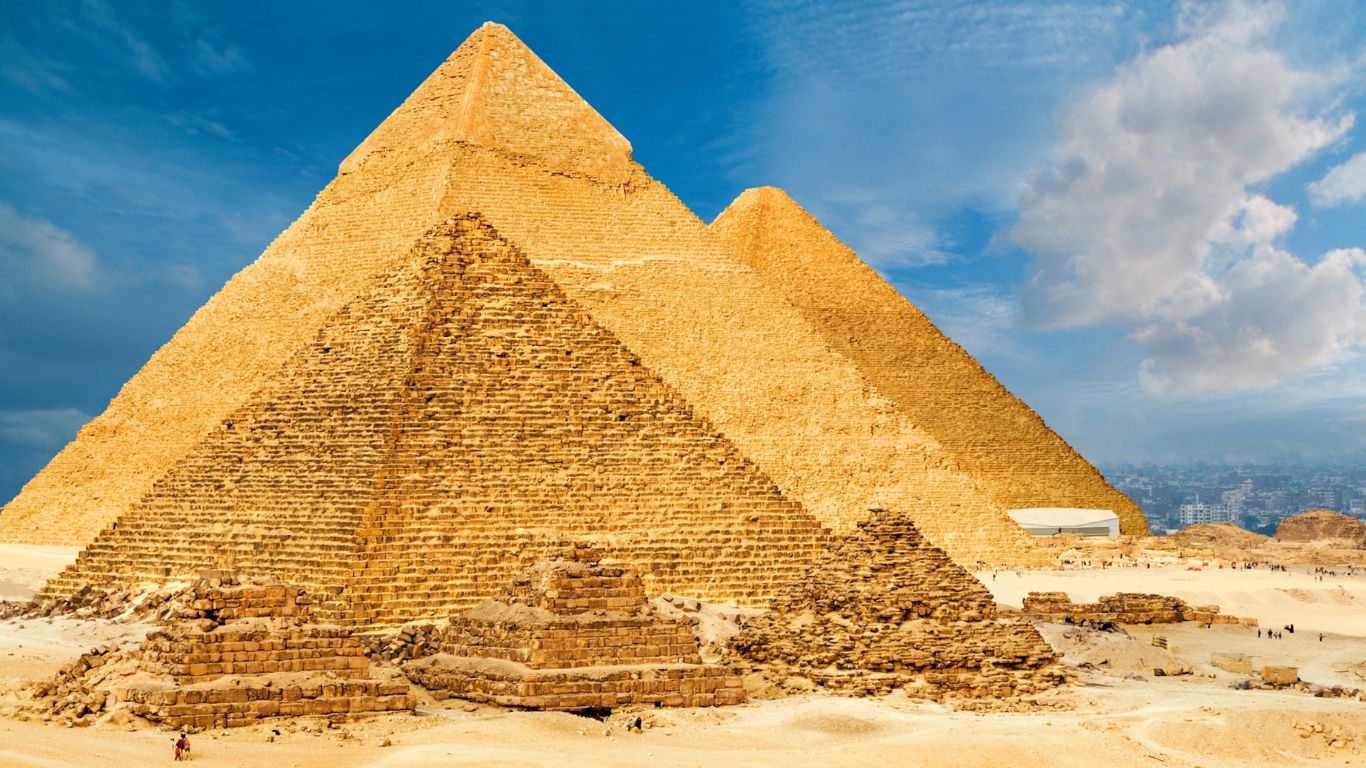The Great Pyramids of Giza have long been considered one of the greatest architectural feats in human history. These ancient structures, located on the outskirts of Cairo, Egypt, have been shrouded in mystery and intrigue for thousands of years, and have been the subject of countless books, movies, and legends. Here we will delve into the history of Pyramids, exploring who built them, why they were built, how they were constructed, and some fun facts that you may not know about these incredible structures. Join us as we take a journey back in time to uncover the secrets of the Great Pyramids of Giza.
History
The history of Pyramids of Giza dates back to the Old and Middle Kingdom periods in ancient Egypt (26th-18th century BC). During this time, the pharaohs and their consorts were buried in elaborate tombs to ensure their preservation for the afterlife. The largest and most famous of these tombs, the Great Pyramid of Giza, was built for Pharaoh Khufu and is estimated to have been completed around 2560 BC.
Over the centuries, the pyramids were stripped of much of their treasures by tomb robbers, but some artifacts and mummies have been preserved in the pyramids. Despite these losses, the pyramids continue to be revered as engineering marvels, and are considered one of the Seven Wonders of the Ancient World.
Today, the Great Pyramids of Giza are a major tourist destination, drawing millions of visitors each year. Despite being over 4,500 years old, these structures remain as awe-inspiring as ever, reminding us of the remarkable architectural and engineering achievements of ancient civilizations.
Who
The Great Pyramids of Giza were built by the ancient Egyptians. The construction of these massive structures was a massive undertaking, requiring the labor of thousands of workers, including skilled stone masons, laborers, and architects. The pyramids were commissioned by the pharaohs of the Old and Middle Kingdom periods, who wanted to ensure their preservation for the afterlife.
The ancient Egyptians believed that the pharaohs were divine beings who needed to be protected and honored after death. As a result, they constructed elaborate tombs for them, which eventually evolved into the massive pyramids that we see today. Despite the difficulties and challenges involved in building such structures, the ancient Egyptians were able to achieve a remarkable feat of engineering that continues to impress and inspire us to this day.
Why
The Great Pyramids of Giza were built for religious and cultural reasons. In ancient Egypt, the pharaohs and their consorts were buried in elaborate tombs to ensure their preservation for the afterlife. This was based on the belief that the pharaohs were divine beings who needed to be protected and honored after death.
The pyramids served as the pharaohs’ final resting place, as well as a symbol of their power, wealth, and influence. The pyramids were constructed with the intention of being a permanent monument to the pharaohs, and were designed to withstand the test of time and the elements.
The pyramids were also seen as a way for the pharaohs to make a statement about their power and wealth, and to inspire awe in their subjects. By constructing such massive and intricate structures, the pharaohs demonstrated their ability to organize and direct large-scale projects, and to command the resources and manpower needed to complete them.
How
The construction of the Great Pyramids of Giza involved several key steps and a combination of simple tools, advanced engineering techniques, and manual labor. The first step was to quarry the stone blocks that would be used to build the structures. This involved cutting the stone from the quarry and transporting it to the construction site, a process that was done using sledges, rollers, and ramps.
Once the stone blocks arrived at the construction site, they were laid in place using ramps, cranes, and pulleys. Some of the stone blocks needed to be shaped and carved to fit into place, and this was done using simple tools such as chisels, hammers, and copper saws.
The internal chambers and passages of the pyramids were built using the same techniques as the external walls, with the addition of ladders and ramps to allow workers to move around the structure. This was a delicate and precise process, as the internal chambers and passages had to align perfectly to ensure the stability of the pyramid.
The final step in building the pyramids was to place the capstone, which was typically made of granite or other precious materials. This was a significant event, as it marked the completion of the structure and was seen as a symbol of the pharaoh’s power and wealth.
Fun facts
- The largest pyramid, the Great Pyramid of Khufu, is estimated to have required around 2.3 million stone blocks, each weighing an average of 2.5 tons.
- The Great Pyramids are some of the most precisely aligned structures in the world, with the corners of the pyramids aligned almost exactly with the cardinal points of the compass.
- The ancient Egyptians believed that the pharaohs’ journey to the afterlife was guided by the stars, and that the pyramids were aligned with the stars in the constellation Orion.
- It is estimated that it took around 20 years to build the Great Pyramid of Khufu, with a workforce of around 100,000 workers.
- Despite the massive scale and complexity of the pyramids, very few written records or drawings have survived from the construction period, leaving many questions about their construction and purpose unanswered.
Also Read: The Egyptian Myth of The Book of The Dead and The Journey to The Afterlife












